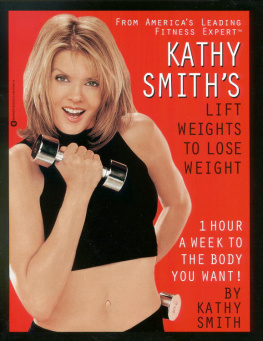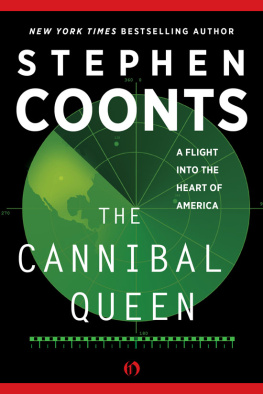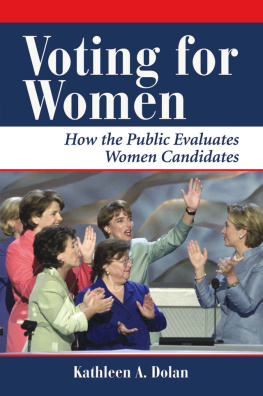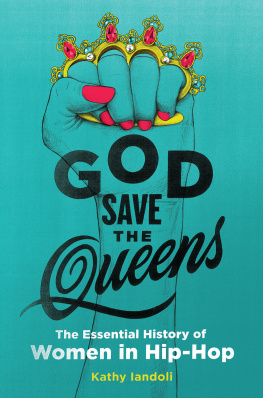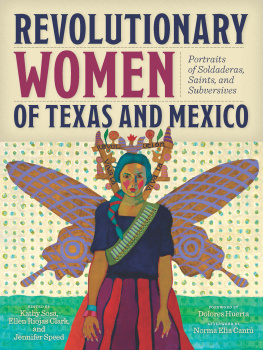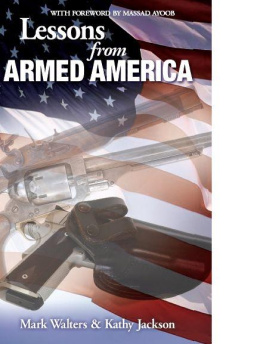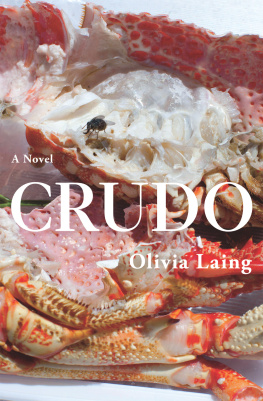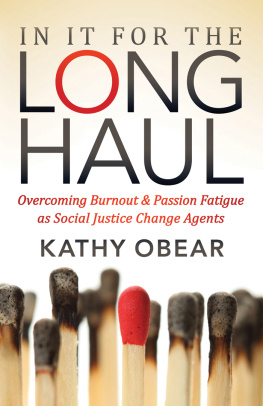CONTENTS
Guide
Kathy Stearman
Its Not About the Gun
Lessons from My Global Career as a Female FBI Agent
For Mom,
Next time around, well explore the world together.
For Keith,
I chose you in the past, I choose you in the now, I will choose you in all my futures, all my forevers, and all my eternities.
AUTHORS NOTE
All names in my book have been changed, with six exceptions: Robert Mueller, John Pistole, Jon Huntsman Jr., Eric Holder, David Petraeus, and Louis Freeh, all men with highly public profiles.
In specific instances, I have changed physical descriptions of persons to protect their privacy, as well as details, locations, and circumstances surrounding specific meetings to protect the integrity of FBI investigations and strategies.
My work was highly classified, thus, some of my story cannot be told. As a precaution that I might have added a classified detail inadvertently, my book was reviewed and approved by the FBIs Public Relations Unit prior to publication.
Those areas deemed sensitive by the FBIs Pre-Publication Unit have been redacted for security purposes. You, the reader, will have to use your imagination to fill in those blanks. For those readers who have a deeper understanding of the inner workings of the FBI and American international diplomacy, you will, no doubt, know exactly who or what I am talking about.
The opinions expressed in this book are mine and not that of the FBI.
I hope I have been able to provide a well-rounded perspective of the life of a female FBI agent.
PROLOGUE THE FOOT
I could not stop staring at the foot. The brownish-red henna traced along the curve of the arch was delicate, depicting what looked like some kind of vine, although the detail was too small to determine from the photo I was holding. The toenails were shiny and red, freshly painted; no scratches or scuffs marred their surfaces. This was surprising, considering the foot had been severed, blown off during a terrorist bombing committed by the foots previous owner.
As the sweat dripped down my cleavage and into my belly button, soaking my bra and the front of my cotton shirt under my suit jacket, I felt the fatigue of the previous few days bear down on me mentally and physically. I plucked at the front of my shirt; small sucking sounds of wet fabric pulled away from drenched skin. Tiny rivulets of sweat ran down my scalp, matting my hair to my head. I asked myself why I had even bothered to blow dry my hair before leaving the Cinnamon Grand Hotel that morning. By the end of any day in Colombo, professionally dressed in my business suit, I looked like a wilted lettuce leaf, left in the sun too long. Although my counterparts dressed in cool cotton shirts and lightweight slacks, appropriate for the climate, there was no feminine equivalent for attire. I tended to dress modestly and cover as much of my figure as possible. Taking off my suit jacket to display a sweat-soaked shirt clinging to my torso would be equivalent to being in a wet T-shirt contest. I preferred to endure the heat and sweat to avoid undue attention.
I was working on a terrorism investigation in Colombo, Sri Lanka, one of the countries I was responsible for covering. I loved Sri Lanka, with its lush foliage and tropical landscape, sugary white beaches, and people who smiled more than anyone I had met in my travels. But, apart from the breezes closer to shore, the climate could be heavy and oppressive, like breathing sweltering, humid air through hot cotton balls. Sri Lanka lies 10 degrees north of the equator. For those of us who arent ancient mariners, that is 479 miles from the exact middle of the earth, latitudinally speaking. The temperature rarely varies from a range of 82 to 90 degrees Fahrenheit on any given day. The lushness of the landscape is fed by two distinct monsoon seasons and daily afternoon showers, which means high humidity.
I had just finished having the obligatory cup of teahot teaand cookies, while discussing the previous days events. A team of agents from the US had accompanied me on this visit, and we had spent a couple of days at the military base, standing in the beating sun, sifting through weapons seized during a recent military raid. We were there to catalogue them as evidence in an upcoming terrorism trial. The agents and I were discussing the logistics of getting the weapons on an airplane back to the US when Mr. Weerasinghe, my main counterpart with the Sri Lankan National Police, asked me if I would take a look at some evidence from a recent terrorist bombing in Colombo. I agreed and he led us to the small windowless and airless room in which I was standing, now overly crowded with sweating FBI agents and cool-as-cucumbers Sri Lankan National Police officers.
Since the late 1970s, Sri Lanka had been embroiled in an ongoing civil war between factions of Tamils, most of whom follow the Hindu tradition and comprise the minority population, against the Sinhala, most of whom are Buddhist. The Sinhalese also happened to run the government. The US Department of State had placed the separatist group of Tamils, known as the Liberation Tigers of Tamil Eelam (LTTE), on the official Foreign Terrorist Organization list.
When a person or groups of people raise money within the United States to carry out a terrorist attack, the FBI investigates, regardless of where the terrorist attack is going to take place. Its called material support to terrorism, which is why the FBI was involved in an investigation in Sri Lanka. The FBI had been working closely with the Sri Lankan government on several investigations involving the LTTE, which had raised money in the United States to buy weapons and related components to commit terrorist attacks in Sri Lanka.
I slowly perused the contents of the room as Mr. Weerasinghe told me that a female suicide bomber, a Tamil, had entered a government officials office. While standing in front of the officials desk, she had detonated a bomb, killing the official as well as herself. Photos displayed around the room showed grisly scenes of body parts and blood and upturned furniture. Laid out on a table were the remnants of the bombers once-vivid yellow and red sari, now covered in clots of dried brownish-red blood. As I studied the photographs, Mr. Weerasinghe led me over to a specific photo, which showed a pitted and scarred wall, faded to a dingy gray, spattered with a jellylike, yellow globular substance, streaked with blood. Mr. Weerasinghe said, Miss Kathy, we cannot figure out what this is. We thought it might be some new bombing material, but we wanted to ask if you might know.
I inspected the details of the close-up shot, went around to all the other photos, and finally asked, Mr. Weerasinghe, by any chance did the bomber carry the bomb on her upper body, versus in a purse or a bag she was carrying?
Yes, Miss Kathy. His voice lowered. She had packed her brassiere with explosive material and detonated it in front of the official who was sitting with his back against the wall.
How could I explain this one to Mr. Weerasinghe? By his reluctant utterance of the word brassiere, I knew he was uncomfortable speaking of the subject matter with a woman. Although discussion of mutilated female body parts didnt seem to faze him, the mention of intimate female clothing flustered him. I didnt want to make him feel even more awkward or embarrassed. At the same time, I wanted him to understand the implications of what he was looking at. Mr. Weerasinghe, the substance on the wall is breast tissue. He stared at me for a few seconds and then just nodded as if, of course, every woman knows what the inside of her breasts looks like, which, of course, most women do not know. Not like this.


